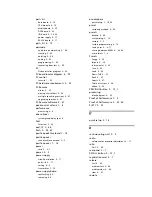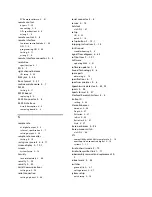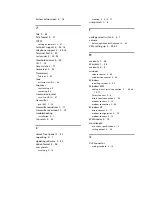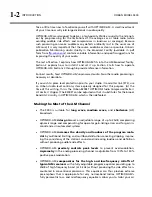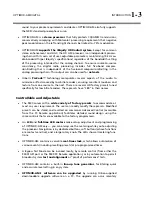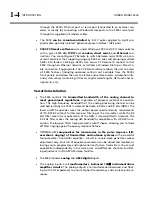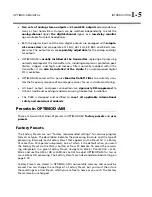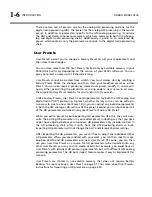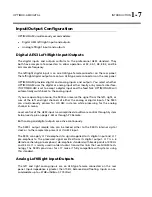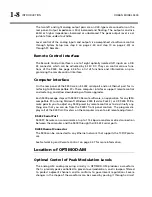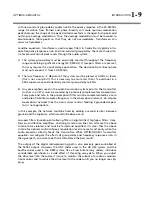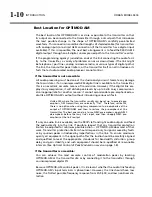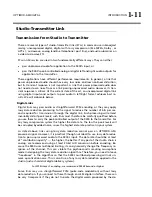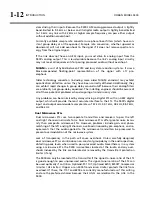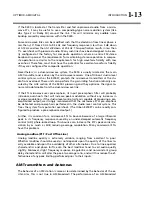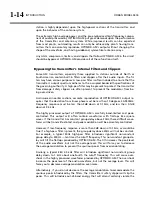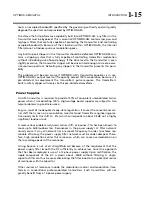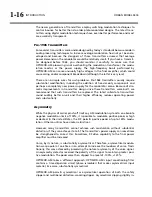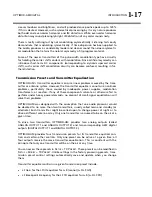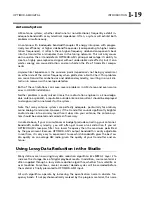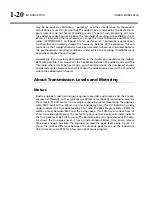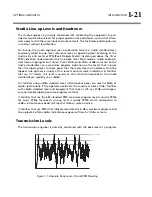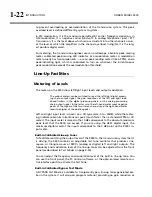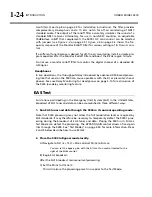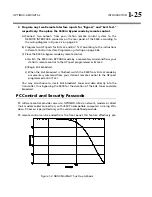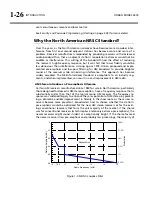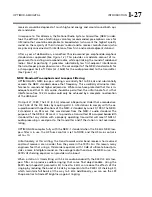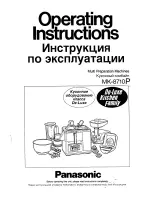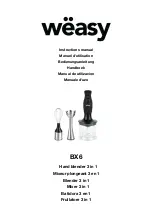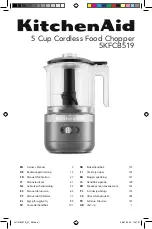
1-12
INTRODUCTION ORBAN
MODEL
9400
vices driving their inputs. Because the 9400’s AM analog-processed output is tightly
band-limited to 9.5 kHz or below and its digital radio output is tightly band-limited
to 15 kHz, any link with 32 kHz or higher sample frequency can pass either output
without additional overshoot.
Currently available sample rate converters use phase-linear filters (which have con-
stant group delay at all frequencies). Sample rate conversion, whether upward or
downward, will not add overshoot to the signal if it does not remove spectral en-
ergy from the original signal.
If the link does not have an AES3 input, you must drive its analog input from the
9400’s analog output. This is less desirable because the link’s analog input circuitry
may not meet all requirements for passing processed audio without overshoot.
NICAM
is a sort of hybrid between PCM and lossy data reduction systems. It uses a
block-companded floating-point representation of the signal with J.17 pre-
emphasis.
Older technology converters (including some older NICAM encoders) may exhibit
quantization distortion unless they have been correctly dithered. Additionally, they
can exhibit rapid changes in group delay around cutoff because their analog filters
are ordinarily not group-delay equalized. The installing engineer should be aware of
all of these potential problems when designing a transmission system.
Any problems can be minimized by always driving a digital STL with an AES3 digital
output, which will provide the most accurate interface to the STL. The 9400’s digital
input and output accommodate sample rates of 32 kHz, 44.1 kHz, 48 kHz, 88.2 kHz,
and 96 kHz.
Dual Microwave STLs
Dual microwaves STLs use two separate transmitters and receivers to pass the left
and right channels in discrete form. Dual microwave STLs offer greater noise immu-
nity than composite microwave STLs. However, problems include gain- and phase-
matching of the left and right channels, overloads induced by pre-emphasis, and re-
quirements that the audio applied to the microwave transmitters be processed to
prevent overmodulation of the microwave system.
Lack of transparency in the path will cause overshoot. Unless carefully designed,
dual microwave STLs can introduce non-constant group delay in the audio spectrum,
distorting peak levels when used to pass processed audio. Nevertheless, in a system
using a microwave STL, the 9400 is sometimes located at the studio and any over-
shoots induced by the link are tolerated or removed by the transmitter’s protection
limiter (if any).
The 9400 can only be located at the transmitter if the signal-to-noise ratio of the STL
is good enough to pass unprocessed audio. The signal-to-noise ratio of the STL can
be used optimally if an Orban Optimod-PC 1101, Optimod 6300, 8200ST Compressor
/ Limiter / HF Limiter / Clipper or an 4000 Transmission Limiter protects the link from
overload. Of these, the 1101 and 6300 are currently manufactured as of this writing
and are the preferred choices because their AGCs are identical to the AGC in the
9400.
Summary of Contents for Optimod-AM 9400
Page 1: ...Operating Manual OPTIMOD AM 9400 Digital Audio Processor Version 1 2 Software...
Page 7: ...Operating Manual OPTIMOD AM 9400 Digital Audio Processor Version 1 2 Software...
Page 52: ......
Page 204: ......
Page 232: ......
Page 260: ......
Page 261: ...OPTIMOD AM DIGITAL TECHNICAL DATA 6 29...
Page 267: ...OPTIMOD AM DIGITAL TECHNICAL DATA 6 35 CPU Module...
Page 273: ...OPTIMOD AM DIGITAL TECHNICAL DATA 6 41 RS232 BOARD PARTS LOCATOR...
Page 275: ...OPTIMOD AM DIGITAL TECHNICAL DATA 6 43 8300 POWER SUPPLY PARTS LOCATOR...
Page 284: ...6 52 TECHNICAL DATA ORBAN MODEL 9400 DSP BOARD PARTS LOCATOR DRAWING 32170 000 14...
Page 292: ...6 60 TECHNICAL DATA ORBAN MODEL 9400 DISPLAY BOARD PARTS LOCATOR...
Page 293: ...OPTIMOD AM DIGITAL TECHNICAL DATA 6 61 DISPLAY BOARD...

